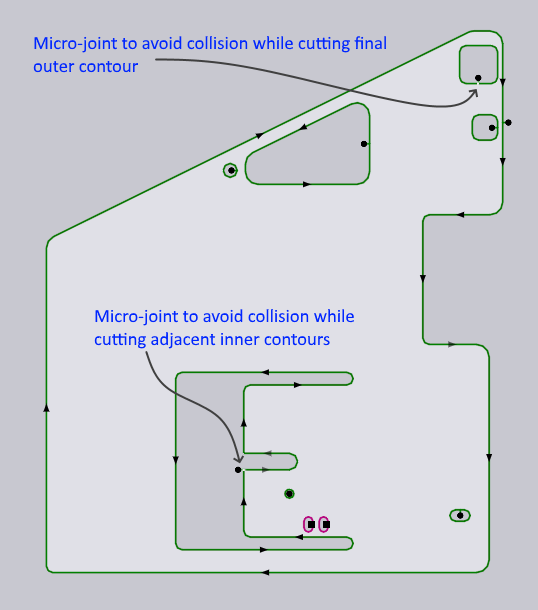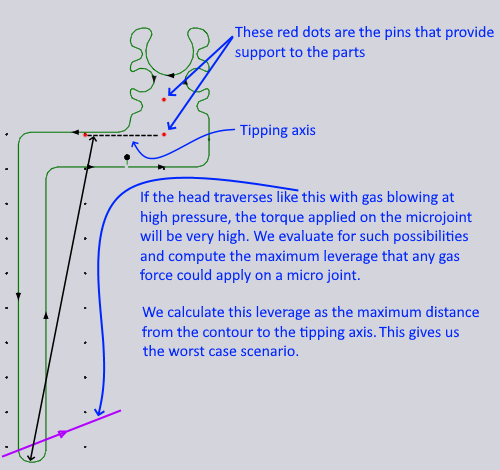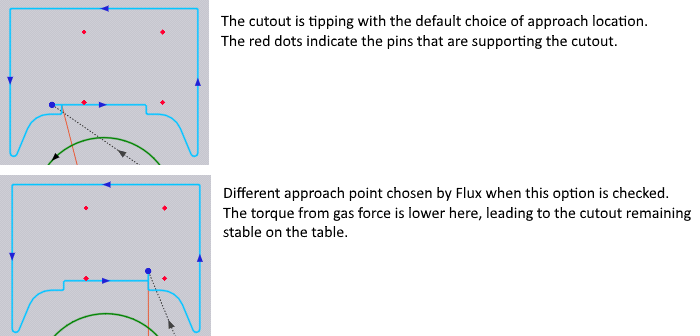Optimizing Tilting Behaviour
Applying Microjoints based on Tilting Calculations
User can define hierarchical finishing rules that will determine how contours are finished. Whether they are microjoint, scrap-cut or left free on the table.

| Option | Description |
|---|---|
None |
No special action is taken |
Auto micro-joint |
Applies micro-joint(s) on the contour. Software will
automatically decide how many micro-joints are required based on the
parameter. |
Cut up scrap |
Cut up the contours in to smaller pieces, so that it falls through the slats. |
One micro-joint |
Create exactly one micro-joint on the contour. |
Two micro-joints |
Create exactly two micro-joints on the contour. |
Three micro-joints |
Create exactly three micro-joints on the contour. |

Destroying holes that can tilt
Using the finishing rules above, user can even decide to scrap-cut holes that can collide with machine head. TecZone will automatically apply this rule and create scrap tooling where necessary when loading the part into the job.
Determine number of required microjoints based on contour geometry, slat configuration, material, thickness & gas pressure
TecZone can determine the number of micro-joints required on a contour. Usually, one micro-joint is enough, but in some cases (typically, long but thin contours) more micro-joints might be required to provide enough support to the contour so that it does not bend down too much into the slats (or even break the micro-joint) due to the torque created by its own weight or gas blowing over it.

Automatic movement of approach point to avoid tilting

Sometimes choosing a different approach point can change an unstable contour into a stable contour. TecZone can detect such situations and automatically adjust the approach point.
